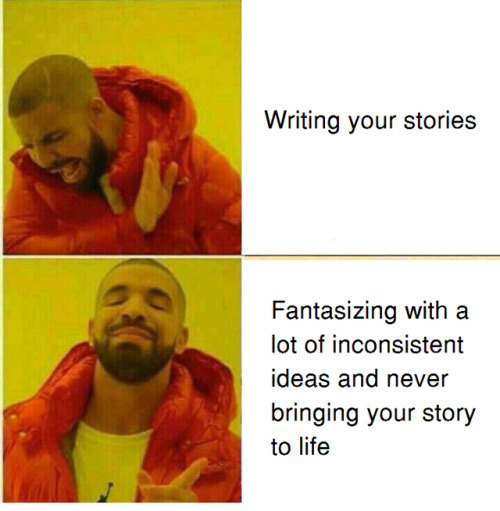Legs For Days. (via Cooltonedcutie)





Legs for days. (via cooltonedcutie)
More Posts from Rtbamapride98 and Others
Writing Prompt #53
The Protagonist recognizes themselves in a painting in an art museum. It is 400 years old. A voice whispers in their ear: “I’ve FINALLY found you.”
The Writer’s Guide to Burns, Part 1: Depth and Percentage
First, I would like to start this post with a little bit of a disclaimer. Burns are absolutely horrific things. They can destroy our sense of self, of even being able to see ourselves as truly human. They inflict pain in such types and amounts as to be mind-boggling, perhaps even debilitating. This series comes with content warnings for burns, childhood burns, pain, critical illness, ICU stays, and comparisons of human flesh to that of animals. Ultimately, it’s what we are.
A quick image search will turn up horrendously graphic images of people whose lives have been completely changed–some might use the word “destroyed”–by burns. I’m endeavoring to keep the images to illustrations, rather than actual photographs. I may succeed, I may not. I strongly recommend you do NOT search for these images. They’re absofuckinglutely horrific.
For my own part, I’ve collected people out of fires, and not all of them have lived. I’ve done my best to keep them alive and deliver them safely to the burn unit. I’ve also spent a brief amount of time rotating through the burn unit at a major, world-known medical center and have been fortunate enough to get lectures from their staff on a couple of occasions.
Being exposed to people who’ve been burned like that changes you.
It changes the way you’re willing to perceive human lives. We are no longer indestructible. We are knit of flesh, and we roast, just like any other. We are so very, very fragile.
In this series of posts I will do my best to keep these memories out, to stick to the medicine and not the experience. But it may creep in around the edges.
So this series is dedicated to burn victims, to their families, and to the godsdamned courageous Burn ICU nurses and doctors who care for the most-badly burned. Thank you for all that you do.
Burn Depth and Degree
There are multiple ways to classify burns. However, I’ll use the two most common ones, which classify burns based on depth.
Burns are typically classified into degrees, which talk about how far into the skin burns go. I’ll go into detail after this handy illustration, courtesy of Medscape (WARNING: That linked slideshow contains graphic images).

Courtesy of Medscape.
First-degree burns are the least serious. They damage only the top layer of skin (the epidermis), and tend to come from the coolest sources around. The skin may turn red, and be painful, but won’t be permanently damaged. Humans can develop first-degree burns from thermal (heat) sources, or from UV radiation, such as a sunburn.
Second-degree burns are more serious. As you can see above, the dermis, the underlayer of the skin (which contains things like sweat glands and certain nerve endings). Burns like this may blister – this is a relatively reliable indication of a second degree burn.
I cannot overstate this enough: second degree burns are extremely painful, especially across large areas of the body.
Third-degree burns are burns that have made their way through the entire layer of the dermis and into the subcutaneous tissue. These are the burns that destroy underlying blood vessels and cause them to coagulate, that destroy nerve endings.
The tissue itself may look waxy and white in color, or it may char over or turn brown. It may gain a leathery appearance.
Third-degree burns may also continue to burn deeper, causing damage to the underlying muscle and even bone. Burns, under the right circumstances, can cause amputations, though these are rare.
One other thing worth noting about 3rd-degree burns: the center of them doesn’t hurt, because the underlying nerves have been burned away. However, no 3rd-degree burn is isolated. Because that tissue retains heat, it will always burn the area around it. A third degree burn will always have a circumferential a second degree burn around it, and that second degree burn will hurt all to hell.
4th-6th degree burns: You may sometimes see people referring to burns as “4th degree” burns, all the way up to 6th degree burns. This is an older nomenclature; these numbers indicate burns below the depth of the skin, into the muscle tissue and underlying organs. But this is, at least in my service area, outdated terminology. Burns this deep are still categorized as 3rd degree.
Partial- and Full-Thickness Burns
This is an easier way of classifying burn depth. Partial-thickness burns only involve the epidermis and potentially part of the dermis layer – 1st and 2nd degree – while anything worse involves all of the dermal layers (3rd degree). The burn unit I’ve worked most closely with actually prefers this nomenclature, but the other is so well known I had to include it as well.
Common Burn Sources
Burns can come from one of several sources. They may be because of direct heat, such as in a house fire, or from a hot liquid splashing on someone. Critical burns have come from coffee cups and frying pans, especially in small children, who love to grab at things without understanding why grabbing the pot handle on the stove may be a terrible idea.
This blog does not give real world advice. However, if there are small children near you, turn your godsdamned pot handles IN on the stovetop. Childhood burns are preventable. Prevent them.
Yes, I’m willing to break a very strict blog policy I’ve had since day one for this. It’s that important, and it’s that simple. Don’t give them anything to grab.
The Rule of 9s
Estimating burn size is an inexact science, but we’ve sure tried! The Rule of 9 gives a quick estimate of “percent” of the burn – specifically, the percentage of the patient’s Body Surface Area that’s burned (%BSA in medslang).
The chart looks like this:

Image courtesy of WebMD
As you can see, each aspect of the body accounts for 9% of total body surface area, except for the genitals, which account for 1% of BSA regardless of configuration or size. As my EMS instructors like to say, even Ron Jeremy’s 1% is still only 1%.
So a person with complete circumferential burns of one leg would have burns over 18% BSA (Anterior: 9, posterior: 9; 9+9=18%). Meanwhile, if the burns encompassed the abdomen and anterior right forearm, their %BSA would be 13.5 (9% + 4.5%). A burn over the entire lumbar area, half the upper back, and entire left arm would have (9% + 4.5% + 9% = ) 22.5% BSA burns.
For smaller areas, the area of the patient’s palm is equivalent to 1% of BSA.
For writing, %BSA is only important as a throwaway comment, but it’s worth the quick math to figure out how much the character is burned so a medical character can sound like a smartypants. (“Mister Rogerthorn has full-thickness burns over 36% of his body” sounds quite official!)
That’s It for Part 1!
This post is running long, so we’re going to stop here for now. Next time on this series we’ll talk about burn first aid and field care, along with co-morbidities we might see (including inhalation burns and carbon monoxide poisoning).
Thanks so much for your time, and for your attention, and I’ll see you in Part 2!
xoxo, Aunt Scripty
disclaimer
How would you feel about a free eBook destroying BS tropes that need to die?
ScriptMedic is funded through generous donations on Patreon. Consider becoming a Patron and see the freaking future!

Character Strengths and Related Flaws
So, we all know the drill. When you’re creating a character, you want them to be balanced. Your character should have both strengths and flaws. You’re not making a perfect person, nor are you making a complete monster.
However, sometimes you can find yourself just going for a random assemblage of flaws, as if picking them out of a hat. That’s one way to go about it, but I think the much better way is to look at the strengths you’ve given your character, and see what flaws may correspond to them, what characteristics are often found together. For example:
Adaptable
Definition: able to adjust to new conditions
Flaws: overly compliant, blindly obedient
Adventurous
Definition: willing to take risks or to try out new methods, ideas, or experiences
Flaws: rash, foolhardy, takes unnecessary risks
Keep reading
Useful Writing Resources
This is an extensive list of resources for every problem you could come across while writing/planning/editing your novel. Use it well;)
{ *** } Indicate a Highly Reccommended Resource

Planning/outlining Your Work
How To Outline ***
Zigzag Method : Creating Plots
How to Plot a Romance Novel
Seven Great Sources of Conflict for Romances
Let’s talk about brainstorming
Writing Something With Meaning ***
Past Or Present Tense? : How To Decide
Writing Your Work
How To Write A Fabulous Chapter #1 ***
How to Build a Romance Thread in Your Story
The Big Book Of Writing Sex ***
6 Ways to Get Your Readers Shipping Like Crazy
Romance Writing Tips ***
20 Tips for Writing Lovable Romance Novel Heroes
7 Ways To Speed Up Your Writing ***
80+ Barriers to Love: A List of Ideas to Keep Romantic Tension High
9 Romance Writing Mistakes to Avoid
Removing the Creeps From Romance
19 Ways to Write Better Dialogue ***
50 Things Your Characters Can Do WHILE They Talk ***
How To Write Action And Fight Scenes
10 Steps To Write Arguments
9 Ways To Write Body Language
Writing Good Kissing Scenes
Writing Murders
Create And Control Tone ***
Tips for Writing Ghost Stories
Incorporating Flashbacks
12 Tips To Avoid Overwriting ***
Characters
Behind the Name
Top Baby Names
Looking for a name that means a certain thing? ***
7 Rules of Picking Names
Most Common Surnames ***
Minor Character Development
Writing Antagonists, Antiheroes and Villains
Characters With Enhanced Senses
5 Tips to Help You Introduce Characters
How Do You Describe a Character?
How To Write Child Characters
36 Core Values For Building Character
Questions To Answer When Creating Characters ***
4 Ways to Make Readers Instantly Loathe Your Character Descriptions
5 Ways to Keep Characters Consistent
Character Archetypes
25 Ways To Fuck With Your Characters
Building Platonic Relationships Between Female Characters
9 Simple and Powerful Ways to Write Body Language
33 Ways To Write Stronger Characters
Conveying Character Emotion
How to Make Readers Love an Unlikable Character…
How to Create Powerful Character Combos
How To Describe A Character’s Voice ***
Describing Clothing And Appearance ***
Career Masterpost ***
Creating Your Character’s Personality ***
Character Flaws ***
Editing
DON’T EDIT>>> REWRITE THE WHOLE THING FIRST
Ultimate Guide To Editing Each Aspect Of Your Work ***
Why You Would Read Your Novel Out Loud ***
Grammar and Punctuation ***
How To Write A Captivating First Sentence
10 Things Your Opening Chapter Should Do: A Check-List for Self-Editing ***
Saving Your Story: Finding Where It Went Wrong
How To Condense Without Losing Anything
The Stages Of Editing
Dialogue/Description Balance
3 Proofreading Tips
The Short Story Form
Chapter & Novel Lengths
Anatomy Of A Novel : Chapters and Parts ***
How To Write Chapter After Chapter Until You Have A Book ***
Where Chapter #2 Should Start
Step By Step Guide To Editing Your Draft
Writing Tool: CTRL-F (How And Why You Should Use It) ***
How To Kill A Character
25 Steps To Edit The Unmerciful Suck Out Of Your Story
5 Ways To Make Your Novel Helplessly Addictive ***
Setting
{Setting} How To Describe Setting In Your Stories ***
20 Questions To Enhance Setting
How To Bring Your Setting To Life
Miscellaneous Resources You Can Use In Between
How to Write from a Guy’s POV
The Emotional Wounds Thesaurus
Text To Speech Reader
Compare Character Heights
A Visual Dictionary of Tops
Writers Helping Writers
7 Tricks To Imrove Your Writing Overnight
Work Out/ Word Count : Exercise Between Writing ***
Most Important Writing Tips ***
Let’s talk about diversity in novels
Letting Go Of Your Story
Keeping A Healthy Writing Schedule And Avoiding Procrastination ***
How To Create A Good Book Cover
Write or Die
Tip of my Tongue
Character Traits Form
Online Thesaurus
Writing Sketchy/Medical/Law
Coma: Types, Causes, etc
Tips for writing blood loss
Gunshot Wound Care
Examples of Hospital Forms
Common Legal Questions
The Writer’s Forensics Blog
Brain Injury Legal Guide
Types of Surgical Operations
Types of Mental Health Problems
A Day in the Life of a Mental Hospital Patient
Global Black Market Information ***
Crime Scene Science
Examining Mob Mentality
How Street Gangs Work
Writers’ Block Help/ Productivity
Story Plot Generator
@aveeragemusings ‘ Cure To Writers’ Block ***
50 Romance Plot Ideas
Reading Like A Writer ***
Defeat Writers’ Block
Writing In A Bad Mood ***
Writers Block
When You’ve Lost Motivation To Write A Novel ***
What To Do When The Words Won’t Flow ***
9 Ways To Be A More Productive Writer
“I Cannot Write A Good Sentence Today” (How To Get Over It) ***
Real Writing Advice ***
Info You Need To Know & Words You Didn’t Think Of
A Writer’s Thesaurus ***
Words To Describe… ***
Words & Phrases To Use In Your Sex Scenes ***
Colors (An Extensive List Of Colors)
List Of Kinks & Fetishes ***
List Of Elemental Abilities
inkarnate.com : World Creator And Map Maker For Your Imaginary Setting
Body Language Phrases
List Of Legendary Creatures
How To Write Magic
Hairstyle References
Hemingway : Writing Checker
Body Types: Words To Describe Bodies and How They Move Around
Poisonous Herbs and Plants ***
The Psychology of Color
The Meaning behind Rose color
Types of Swords
Color Symbolism
How a handgun works
How to Write a Eulogy
Types of Crying
Avoiding LGBTQ Stereotypes ***
Superstitions and More
The 12 Common Archetypes
Language of Flowers
12 Realistic Woman Body Shapes
Using Feedback And Reviews
Turning Negative Reviews Into Positive Ones ***
Proofreading Marks : Easy Symbols To Make Reviewing/Feedback Easier ***
Authonomy Teen Ink Figment Fiction Press ReviewFuse
These Are Trusted Critique Sites ;)

The moment I became terrified and aroused at the same time.






❖ cat and jax

Ravenclaw: You’re making me claustrophobic. Hufflepuff: What does claustrophobic mean? Gryffindor: It means he’s afraid of Santa Claus. Ravenclaw: No, it doesn’t. Hufflepuff *giggling*: HO HO HO!! Gryffindor: Stop it! You’re scaring him!
The Losers Club as Buzzfeed Unsolved Quotes
Mike: Yeah, I just kinda looked into places that would make me want to die and I think this checks that box.
Bill: It's a g-g-g-g-ghost butt!
Beverly: Hey, you demon fuck!
Ben: Hello spirits! We're here with good vibes. We ask you to let us film you and put you on Youtube
Eddie: No-one can see the top of your head except God
Stan: I don't want to be a ghost-hunter! This is all-bullshit!
Richie: DO YOU HEAR HOW COCKY I AM? WOULDN'T YOU LIKE ME TO JUST SHUT THE HELL UP?
bonus:
the adults of Derry: I'll tell you what. I love when serial killers have a fun little thing.
Georgie: I'm gonna haunt you... I'm gonna make creaks!
Pennywise: Hmmhmmhmm! The Devil, his Satanic Majesty! Hmmhmmhmm, That'll get them! Time to go murder again!
The Punisher characters as Salem the cat
Frank Castle

Billy Russo

Karen Page

Dinah Madani

David Lieberman

Curtis Hoyle

Sam Stein

Me, the entire time during season 1

BONUS:
Dinah to Billy:

-
 spafers reblogged this · 3 years ago
spafers reblogged this · 3 years ago -
 experiment-626-blue-alien liked this · 4 years ago
experiment-626-blue-alien liked this · 4 years ago -
 tonguethulhu reblogged this · 4 years ago
tonguethulhu reblogged this · 4 years ago -
 nerdbruh-256 reblogged this · 4 years ago
nerdbruh-256 reblogged this · 4 years ago -
 very-amarican liked this · 4 years ago
very-amarican liked this · 4 years ago -
 anonanonymousanonanon liked this · 4 years ago
anonanonymousanonanon liked this · 4 years ago -
 imatulipinacup reblogged this · 5 years ago
imatulipinacup reblogged this · 5 years ago -
 krishnahare liked this · 5 years ago
krishnahare liked this · 5 years ago -
 sketch-dino412 liked this · 5 years ago
sketch-dino412 liked this · 5 years ago -
 gin-gin-jen reblogged this · 6 years ago
gin-gin-jen reblogged this · 6 years ago -
 dippinpots liked this · 6 years ago
dippinpots liked this · 6 years ago -
 helplesscreator liked this · 6 years ago
helplesscreator liked this · 6 years ago -
 unopened-bowling-ball liked this · 6 years ago
unopened-bowling-ball liked this · 6 years ago -
 charlie-in-a-beanie liked this · 6 years ago
charlie-in-a-beanie liked this · 6 years ago -
 spamnshit reblogged this · 6 years ago
spamnshit reblogged this · 6 years ago -
 spamnshit reblogged this · 6 years ago
spamnshit reblogged this · 6 years ago -
 spamnshit liked this · 6 years ago
spamnshit liked this · 6 years ago -
 vaguelyfetch liked this · 6 years ago
vaguelyfetch liked this · 6 years ago -
 flowerstomeadows liked this · 6 years ago
flowerstomeadows liked this · 6 years ago -
 dancingatafuneral reblogged this · 6 years ago
dancingatafuneral reblogged this · 6 years ago